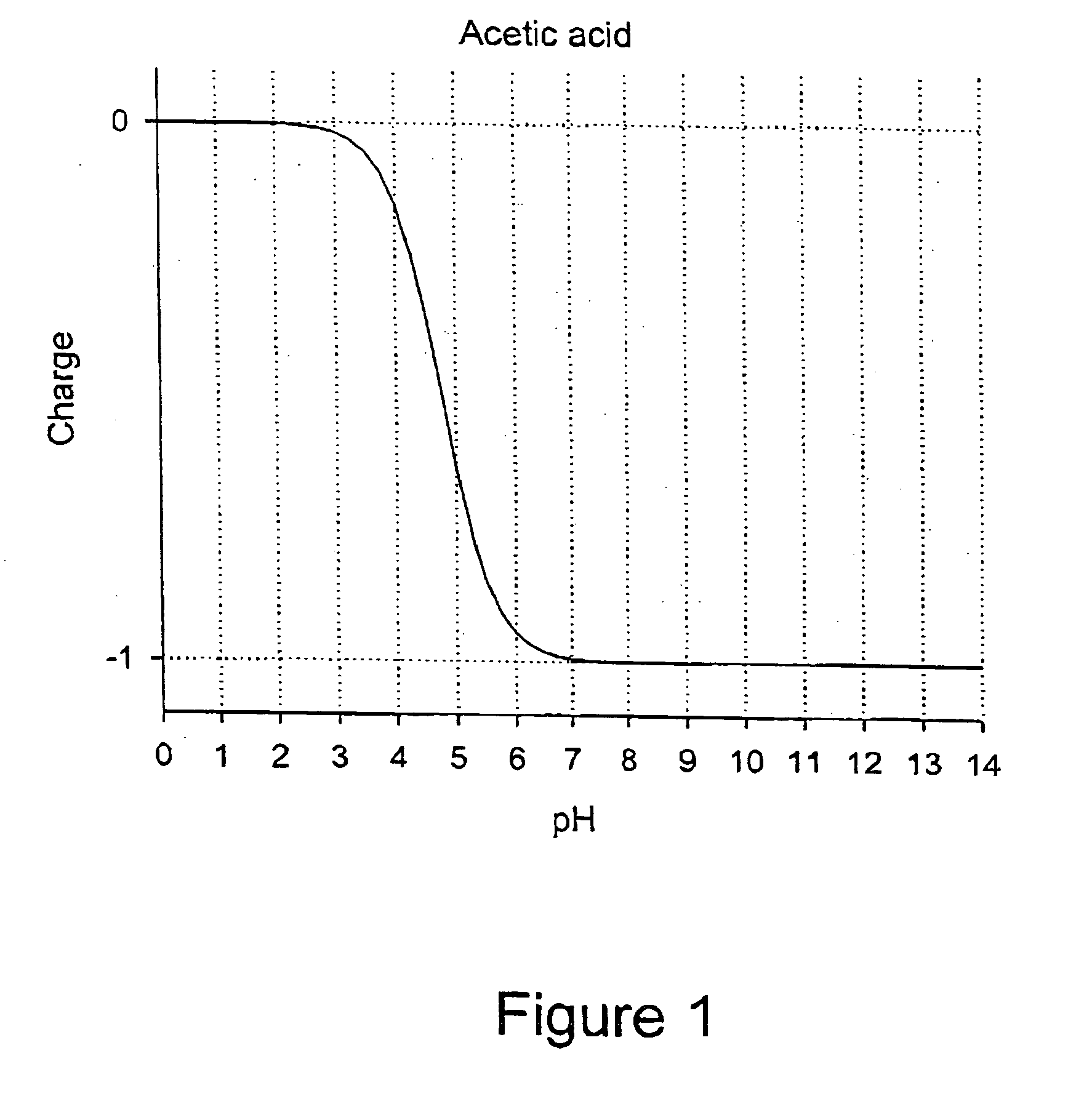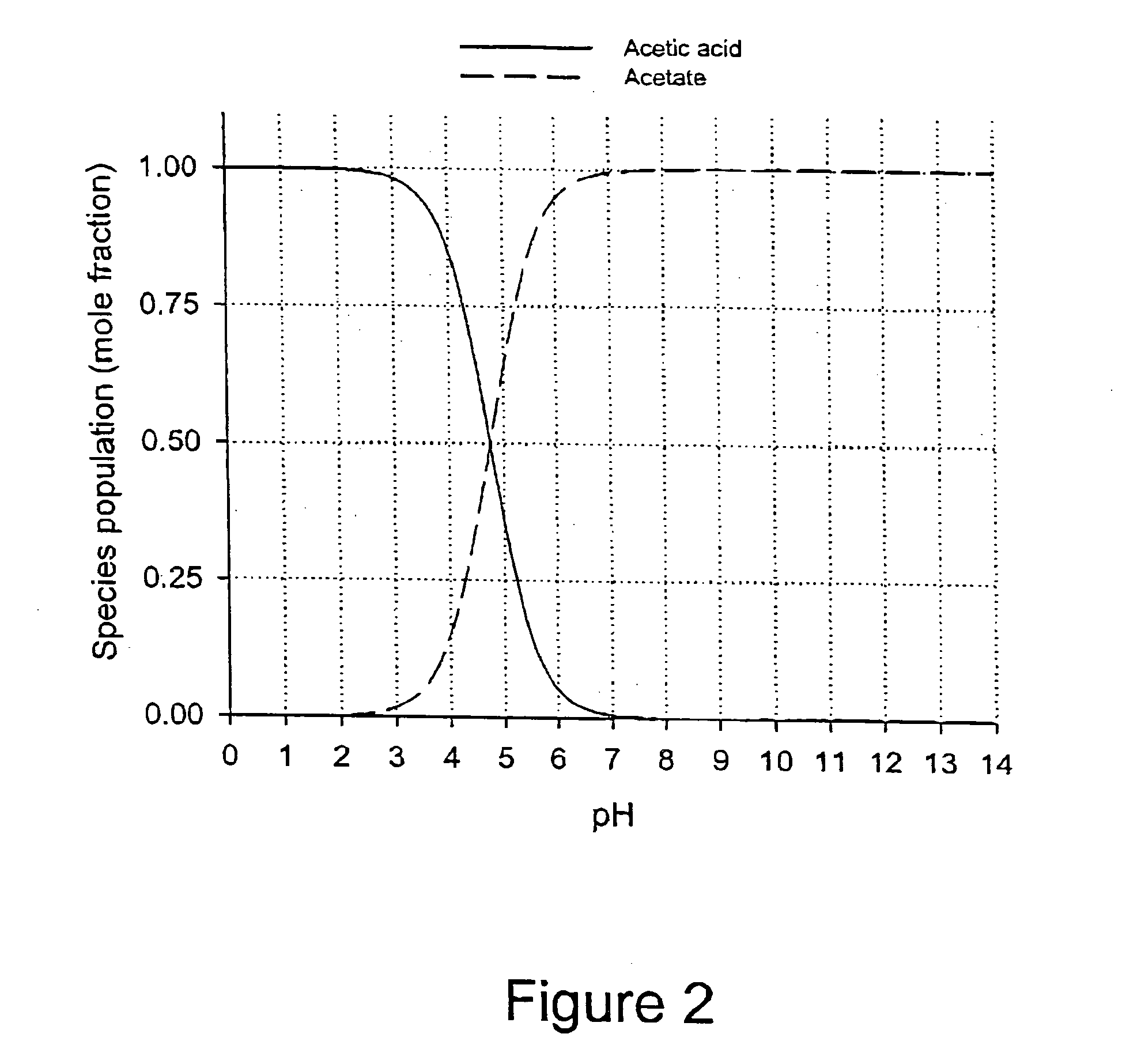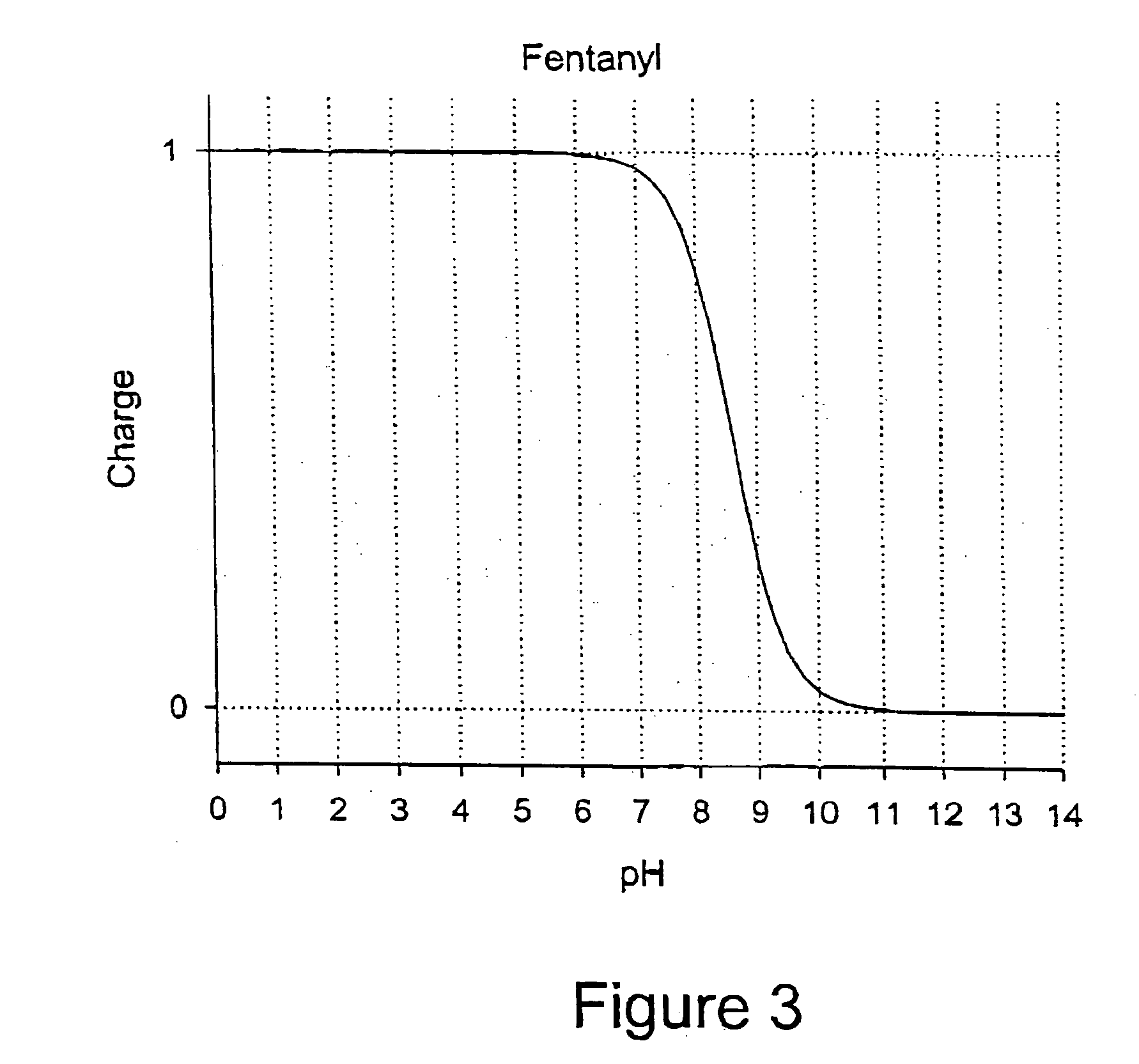Formulations for coated microprojections having controlled solubility
a technology of microprojections and coatings, applied in the direction of gastrins/cholecystokinins, drug compositions, peptides, etc., can solve the problems of biologically active agents that present certain challenges, many medicaments are completely ineffective or have radically reduced efficacy, poor patient compliance, etc., to improve solubility, improve solubility, and reduce solubility
- Summary
- Abstract
- Description
- Claims
- Application Information
AI Technical Summary
Benefits of technology
Problems solved by technology
Method used
Image
Examples
example 1
[0249]FIG. 1 shows the charge profile of acetic acid (pKa 4.75) as a function of pH. At pH below about 2.5 the carboxyl group of the acetic acid is completely protonated and thus there is no charge on the molecule. As the pH increases from about 2.5 to about 7, more and more of the carboxyl moieties become ionized and thus forming the negatively charged acetate ion. At about pH 7, all of the carboxyl groups are ionized.
[0250]FIG. 2 shows the mole ratios of acetic acid and acetate. At pH 0, with the carboxyl group of acetic acid fully protonated, there is essentially only acetic acid, thus the mole fraction is 1. At about pH 2.5, ionization of the carboxyl group begins and the solid curve representing acetic acid in graph starts to move downward. At the same time, the dashed line, representing the ionized acetate, starts to move upwards off of the 0.00 line. At about pH 4.7 there are equal numbers of charged and uncharged moieties. At pH greater than about 7, there is no longer any ...
example 2
[0257] 160 mg fentanyl hydrochloride and 40 mg fentanyl acetate are solubilized in 10 mL water. The coating solution is then applied to the microprojections using the coating methods described in U.S. Publication No. 2002 / 0132054. The coating is analyzed for fentanyl content and is found to contain 80% fentanyl hydrochloride, 5% fentanyl acetate, and 15% fentanyl base (expressed as mole %). When the device is applied in humans using the applicator described in U.S. Publication 2002 / 0123675, fast onset is observed followed by sustained delivery of fentanyl.
example 3
[0258] 100 mg fentanyl hydrochloride and 100 mg fentanyl base are solubilized in 10 mL ethanol. The coating solution is then applied to the microprojections using the coating methods described in U.S. Publication No. 2002 / 0132054. The coating is analyzed for fentanyl content and is found to contain 50% fentanyl hydrochloride, and 50% fentanyl base. When the device is applied in humans using the applicator described in U.S. Publication 2002 / 0123675, sustained delivery of fentanyl is achieved following a rapid onset.
PUM
| Property | Measurement | Unit |
|---|---|---|
| boiling point | aaaaa | aaaaa |
| boiling point | aaaaa | aaaaa |
| pKa | aaaaa | aaaaa |
Abstract
Description
Claims
Application Information
 Login to View More
Login to View More - R&D
- Intellectual Property
- Life Sciences
- Materials
- Tech Scout
- Unparalleled Data Quality
- Higher Quality Content
- 60% Fewer Hallucinations
Browse by: Latest US Patents, China's latest patents, Technical Efficacy Thesaurus, Application Domain, Technology Topic, Popular Technical Reports.
© 2025 PatSnap. All rights reserved.Legal|Privacy policy|Modern Slavery Act Transparency Statement|Sitemap|About US| Contact US: help@patsnap.com



